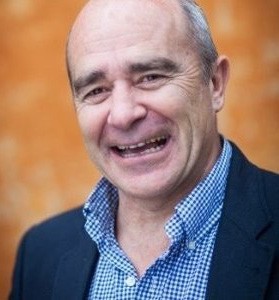RARE DISEASES
Addressing orphan, rare and paediatric drug development through collaborative partnerships
Nazim Kanji and Huw Jones from Quotient Sciences consider orphan drug development and the benefit of CRO/CDMO collaboration, specifically in terms of paediatric rare diseases
In the US, rare diseases are defined as those affecting fewer than 200,000 people, and according to the EU definition, rare diseases affect fewer than five in 10,000 people.1,2 There are approximately 7,000 rare diseases currently known and it is estimated that more than 300 million people worldwide live with a rare disease.3 Many rare diseases are genetically inherited conditions and can include forms of full or partial blindness, haemophilia and liver disease, as well as rare forms of cancer. Patients living with a rare disease often struggle with diagnosis, and even misdiagnosis, of their condition, as a rare disease may come with broad and varying symptoms, ones that are difficult to distinguish between diseases or between patients having the same disease.
Historically, commercial pressures meant the challenges of developing medicines to treat small patient groups impacted by a rare disease were not cost-effective, given the limited projected financial returns. Since the signing of the Orphan Drug Act into law in the US in 1983, the US Food and Drug Administration (FDA) has given special consideration to companies with Fast Track status, awarding research grants and other incentives when certain criteria are met. This has worked to pave the way for the FDA approval of hundreds of drugs for rare diseases in the past four decades, including 28 in 2023, half of the new drugs approved that year, for conditions including amyotrophic lateral sclerosis (ALS); Friedreich’s ataxia, a degenerative disease that damages the nervous system; and rare cancers including mantle cell lymphoma, an aggressive form of non-Hodgkin’s lymphoma.4 Likewise, in the EU, the European Commission (EC) has authorised more than 200 treatments for rare diseases and has similar regulations that set the procedures for designating orphan drug status with guidelines and incentives for research.5
Companies that develop treatments for rare diseases are granted extended market exclusivity of seven years in the US and ten years in the EU, with an additional two years in the EU for paediatric treatments.
Despite these incentives, many conditions do not have approved or suitable treatments available due to the difficulties that remain for drug developers in bringing rare disease drug products to market when compared with those addressing more widespread conditions. Constrained R&D budgets, challenging product development and clinical recruitment, and reimbursement negotiations are among the obstacles faced. Another reality of rare diseases is that many are prevalent in children, raising additional requirements, thereby additional time and cost, to develop age-appropriate and palatable dosage forms for paediatric patients.

The role of outsourcing in orphan drug development
Collaborative partnerships between drug developers and a specialist partner can address the chemistry, manufacturing and controls (CMC) challenges that occur along the way while developing, testing and manufacturing an orphan drug product, to ensure that suitable treatments reach patients in need in a timely and efficient manner.
A contract research, development and manufacturing organisation (CRO/CDMO), if acting as a true strategic partner to its client, should be acutely aware of the need to start a project with the end goal always in mind. It should be able to support its customers in overcoming several obstacles in the development of the orphan drug product, which include:
• Development of patient-centric dosage forms – to ensure that the drug product will address the needs of the patient, and particularly for children, includes the need to ensure that palatable, age-appropriate formulations are available to aid patient compliance
• Progressing rapidly into human volunteer trials – to enable the efficient optimisation and validation of the orphan drug product in humans before proceeding into patient trials
• Customising manufacture and supply of drug products into patient studies – to address the challenges in getting the right product to the right patient at the right time, as patient recruitment can be slow and sporadic. This may require studies to be conducted over several years and across multiple sites in different countries. There may also be added complexity of personalising the drug product to the diverse needs of patients
• Scale-up and commercial manufacturing of drug products with low commercial volumes – the manufacturing partner should have the capability to respond efficiently to the unique needs of a rare disease programme at all stages, from phase 1 through to later clinical trial supply requirements and up to larger-scale manufacturing.
As with all programmes, successful and early demonstration of clinical proof of concept (POC) in a patient population is a key milestone. Molecules across all indication areas, including rare diseases, are increasingly emerging with challenging chemistry to overcome, such as poor solubility and bioavailability.
Related challenges in paediatric drug development for rare diseases
Across all indications, there has been a consistent demand over the past two decades for more paediatric medications that are appropriately designed and optimised for young patients. Many rare diseases impact children and can be fatal in infants or in early childhood, making the need for new treatments even more critical. In the development of age-appropriate formulations the expertise of the selected CRO/CDMO provider can make all the difference in the success of a programme.
Specifically, a CDMO partner should have experience that goes across all areas of drug development, inclusive of the design, development, optimisation, manufacturing and supply of drug products. The outsourcing partner should be able to bring expertise forward in the development of the paediatric formulation that will help its client anticipate and prevent challenges in clinical testing, pass regulatory milestones and achieve market success. For example, the development of a paediatric drug product will require expertise in the development of age-appropriate liquid and solid dose formulations that are easier to swallow such as solutions, suspensions, powder for reconstitution and minitablets. These dosage forms can present taste and palatability challenges to overcome by conducting taste assessment studies. The availability of integrated CMC and clinical research services from one provider can be invaluable when it comes to streamlining drug development. Leveraging the same partner that has the capability to support drug substance, drug product development and manufacturing, and clinical assessment, even in situations where there are small patient populations, as is common with many paediatric drug products, reduces handoffs between multiple vendors, improves knowledge-sharing and facilitates efficient technical transfer as the development programme proceeds from development through to commercialisation.
Case study: Clinical assessment of Maralixibat for rare paediatric liver diseases via real-time personalised GMP manufacturing
Alagille syndrome (ALGS), an autosomal genetic disease, and progressive familial intrahepatic cholestasis (PFIC), a group of cholestatic conditions, are both forms of rare paediatric liver diseases.
Maralixibat, an oral small-molecule ileal bile acid transporter (IBAT) inhibitor, was first approved by the FDA in 2021 for the treatment of cholestatic pruritus in patients with ALGS, ages one and older.6 In its development, a high level of customisation of the drug product was required to support an extensive phase 2/3 clinical programme based upon mg/kg dosing of patients. The client had the potential need to adapt the product during the treatment phase if there was a change in body weight of >10%. A real-time adaptive platform was configured, which enabled a personalised solution product to be manufactured, labelled and supplied on a global basis ready for dosing within 1-3 weeks of subject eligibility being confirmed. Products were resupplied to each patient every 1-3 months based on individual needs and response to treatment. In total, six studies were supported involving the manufacture of over 2,000 individual products for dosing in over 180 patients across 27 sites in nine countries.
As of March 2024, Maralixibat is now also approved by the FDA for the treatment of cholestatic pruritus in patients ages five and older with progressive familial intrahepatic cholestasis (PFIC).7
Conclusion
The development of therapeutics for the treatment of rare diseases can present several challenges to drug developers. The number of rare diseases that impact children make it clear why there is a demand for more paediatric medications that are appropriately designed and optimised for young patients. There are incentives in place across the US and EU to encourage the industry to undertake increasing research in this area. For example, companies that develop treatments for rare diseases can be granted extended market exclusivity. The selection of the right development partner with a proven track record can be crucial in easing the burden and achieving market success. Notably, the availability of integrated CMC and clinical research services from one provider can be invaluable when it comes to streamlining drug development, as well as experience ranging from the design and development through to the commercial supply of drug products.
References
- Visit: oig.hhs.gov/oei/reports/oei-09-00-00380.pdf
- Visit: legislation.gov.uk/eur/2000/141#:~:text=The%20purpose%20of%20this%20Regulation,of%20designated%20orphan%20medicinal%20products
- Visit: rarediseaseday.org/what-is-arare-disease/
- Visit: fda.gov/news-events/fdavoices/fda-approves-many-newdrugs-2023-will-benefit-patients-andconsumers
- Visit: health.ec.europa.eu/europeanreference-networks/rare-diseases_en#orphan-medicinal-products
- Visit: pubmed.ncbi.nlm.nih.gov/34813049
- Visit: fiercepharma.com/pharma/mirum-scores-second-fda-nod-rareliver-disease-drug-livmarli-one-treatpfic

Nazim Kanji is the executive director of Pediatric Services at Quotient Sciences. In his current role, Nazim works closely with clients to help them scope their paediatric development programmes. He also provides ongoing technical support and expertise related to paediatric formulation to the entire Quotient Sciences product development team. Nazim’s experience includes taking products from the concept stage through to commercialisation, with over 25 years of experience in the pharmaceutical and consumer healthcare industries.

Huw Jones is the executive director, Patient Centric Medicines at Quotient Sciences. Huw works closely with clients to help them scope their development programmes, and provides ongoing technical expertise related to formulation development to the entire Quotient Sciences product development team. Huw has over 35 years of experience in the pharmaceutical and consumer healthcare industries, where he has worked in product development roles with Parke -Davis, Boots Healthcare International and Reckitt Benckiser. Huw was co-owner and director of Co-Formulate Ltd, a contract formulation development organisation acquired by Quotient Sciences in 2015.